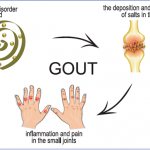(Reuters Health)—People should try non-drug treatment options like massage or stretching for most cases of chronic low back pain before choosing treatment with over-the-counter or prescription drugs, according to new guidelines from the American College of Physicians (ACP).
If the pain began recently, the guidelines recommend superficial heat, massage, acupuncture or spinal manipulation. If patients wish to take medication, they should use non-steroidal anti-inflammatory drugs (NSAIDs), such as ibuprofen, or skeletal muscle relaxants prescribed by a doctor. Acetaminophen and steroids are not recommended for low back pain, according to the guidelines.
But for chronic low back pain—defined as pain that’s lasted more than 12 weeks—the ACP recommends people hold off on medications.
The new guidelines, online Feb. 13 in Annals of Internal Medicine, apply to low back pain that does not radiate to other parts of the body like the legs, says ACP President Dr. Nitin Damle of the Alpert Medical School of Brown University in Providence.1
Patients with low back pain that radiates to other parts of the body need further evaluation, he tells Reuters Health.
Low back pain is one of the most common reasons people visit U.S. doctors’ offices each year. About a quarter of U.S. adults report low back pain at least one day during the previous three months.
“Most back pain is self-limited,” says Dr. Damle. “It’s common, will go away given enough time and patients can help themselves initially by trying some heat and stretching before going to see a physician.”
The new guidelines are based on a review of studies that looked at the use of drug and non-drug therapies for acute, subacute and chronic low back pain. The review did not look at creams or injections, however.
Based on the review, the ACP recommends that people who have been suffering with chronic low back pain try non-drug therapies, such as exercise, acupuncture, mindfulness-based stress reduction, tai chi, yoga, biofeedback, cognitive behavioral therapy or spinal manipulation.
If those methods don’t work, the guidelines say the next step should be NSAIDs or the pain medications duloxetine, which is marketed as Cymbalta, or tramadol, which is marketed as Ultram.
Opioids should only be considered as last resorts, and only prescribed after doctors discuss their risks and benefits with patients.
“If you’re going to have to use opioids, use them in the smallest dose possible with the least frequency and smallest prescription,” says Damle.
The new recommendations are very reasonable, says Dr. Joel Press, who is physiatrist-in-chief at the Hospital for Special Surgery in New York.

